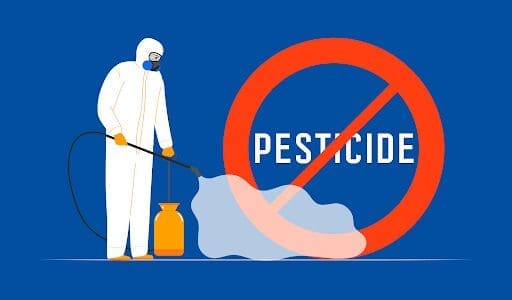
dos and donts guide pest control
The companionship we share with our pets is a unique and treasured bond. These four-legged family members grace our lives with boundless affection, laughter, and memories. As stewards of their well-being, our responsibility extends beyond just daily care. It’s equally important to create a haven for them at home.
A crucial part of this is protecting them from the unwanted attention of household pests. In this blog, we’ll explore pet-friendly solutions to achieve just that.

Common Household Pests and Their Risks to Pets
The existence of household pests can be detrimental to the health of our pets. Despite their tiny proportions, the following pests can potentially cause severe issues for our furry companions:
Fleas and Ticks
Flea and tick infestations can provoke a constant urge to scratch and bite, generating an overwhelming sense of unease for our animal companions. This continuous physical irritation disrupts their normal behavior and extends into their sleep.
The itching sensation can intensify during the quiet hours of the night, leading to frequent awakenings and disturbances in their sleep patterns. Consequently, pets and their owners may experience sleep deprivation and its associated repercussions, including reduced energy levels, irritability, and compromised overall health.
The continuous scratching and biting behaviors induced by these parasites can have further consequences for pets beyond sleep disruption. Repeated trauma to the skin can create openings, inviting secondary infections to take root. These infections can cause redness, swelling, oozing, and discomfort, further diminishing the quality of life of our beloved companions.
Rodents
Mice, rats, and other rodents can serve as carriers of various diseases, posing a dual threat to both pets and humans. The transmission of diseases from rodents to pets can occur through direct contact and indirect exposure to contaminated surfaces, food, or water sources. These diseases manifest in pets via various symptoms, from mild discomfort to more severe illnesses requiring veterinary intervention.
The threat posed to humans in the same living environment is equally concerning. Rodents can introduce pathogens and parasites into households, potentially leading to the spread of diseases through bites, scratches, inhalation of airborne particles, or consumption of contaminated food. Diseases transmitted by rodents can encompass various health issues, including bacterial infections, viral illnesses, and even conditions caused by parasites carried by these pests.
Cockroaches
Cockroaches, prevalent household pests, also pose a risk of transmitting diseases to both pets and humans. These critters can carry many pathogens, bacteria, viruses, and parasites that pose significant health risks to pets upon contact with them or their food. Below are potential diseases and health threats that cockroaches may introduce to animals:
- Asthma and respiratory issues
- Gastrointestinal infections
- Food contamination
- E. coli infections
- Skin infections
- Salmonellosis
- Parasites
- Allergies
House Flies
Like cockroaches, house flies are drawn to unsanitary environments such as garbage heaps, decaying matter, and fecal sites. They inadvertently pick up and transport harmful bacteria and pathogens as they navigate between these unclean areas and the rest of their surroundings.
The risk of disease transmission heightens when these contaminated flies interact with pets via contact with their food, water, or bodies. They can transmit salmonellosis, E. coli infections, and gastrointestinal disorders. In rare instances, pets can become victims of myiasis, where flies lay their eggs on living animals, typically in areas marked by exposed wounds or tangled fur.
Ants
While ants often appear benign, their impact on pets can vary significantly based on the ant species, the size of the pet, and specific situations. Some effects they can have on pets include:
- Bites and stings: Some ants, like fire ants, can deliver painful bites or stings to pets. These can cause discomfort, itching, swelling, and even allergic reactions in some animals. Smaller pets are particularly vulnerable.
- Ingestion: Ingesting ants generally do not harm pets in small quantities. However, some ants may release defensive chemicals when threatened, which can irritate if contact is established.
- Food contamination: Ants are attracted to food sources and can contaminate your pet’s food by carrying bacteria, fungi, and other contaminants on their bodies from various sources and then depositing these pathogens into the pet’s food, leading to gastrointestinal issues for your pet.
- Parasites: Some ants can carry parasites that might affect pets. For example, certain ants can carry tapeworm eggs, which could be transmitted to pets if they ingest the ants.
- Allergic reactions: Just as with humans, some pets might be allergic to ant bites or stings. An allergic response can cause more severe symptoms and require immediate medical attention.
Hidden Hazards of Pesticides and Their Impact on Pets

Our efforts to rid our homes of pests can sometimes expose our pets to harmful chemicals and toxins. Pesticides can elicit various adverse reactions that encompass far more than mere discomfort. Bouts of vomiting and persistent diarrhea can occur, exacerbating dehydration and the deterioration of your pet’s health.
The repercussions can extend further, manifesting as involuntary tremors that disrupt their normal motor functions. The onset of seizures can be a clear sign of trouble. These seizures, often characterized by uncontrollable convulsions and altered states of consciousness, impose a tremendous physical and emotional burden on animals.
Protect your pets from physical and emotional harm by prioritizing their safety with pet-safe solutions and effective pest management strategies. It’s vital to be aware of the risks various household pests present. Such understanding drives us to take proactive steps to enhance our living spaces and safeguard our pets’ well-being.
Pet-Safe Pest Control Methods

For pet owners looking to combat pests, there are two ways to go about it: natural pest control methods or pet-safe commercial products. Both options have advantages, and it’s crucial to select the one that best fits the needs and safety of your pet.
Natural Pest Control Solutions
Natural alternatives are an excellent option for those concerned about commercial pesticides. Some noteworthy choices in this category include diatomaceous earth, citrus sprays, essential oils, and biopesticides.
| Natural Pest Control Solution | What It’s Made Of | How It Works | Safety Precautions |
|---|---|---|---|
Diatomaceous Earth | A fine powder made from fossilized algae. | Dehydrates pests like fleas, ticks, and bedbugs upon contact using a physical pest control method. | Non-toxic to pets and humans when using food-grade. Apply indoors in well-ventilated areas. |
| Citrus Sprays | Boiled peels from fruits like lemons, oranges, and grapefruits. | Uses repellent qualities of compounds like limonene and linalool. Many pests dislike the aroma and avoid treated areas. | Avoid direct skin contact as it may cause irritation. Keep away from eyes. |
| Essential Oils | Oils derived from plants like lavender, peppermint, and eucalyptus. | Deters mosquitoes, fleas, and ticks with their aroma. Some oils hinder pests’ growth or reproduction. | Safe for pets when diluted. Use with care around cats since they metabolize oils differently than dogs and humans |
| Biopesticides | Derived from natural sources like plants, microbes, or insects. | Focus on the ecosystem’s natural mechanisms, reducing impact on non-target organisms and lowering pesticide resistance. | Allow treated areas to dry or settle before reintroducing pets. Always store out of reach of pets and children, and check the label for any specific warnings or guidelines. |
Note that natural solutions may require more frequent application compared to chemical pesticides. Their effects tend to be milder and may wear off more quickly, not to mention, they also tend to be more expensive and exude strong odors. Follow proper application techniques to achieve the best results.
Pet-Safe Commercial Products
Pet-safe commercial products come into play when natural methods prove insufficient. These products are specifically formulated to effectively combat pests while prioritizing the safety of pets.
When selecting such products, it’s essential to look for those with pet-safe certifications. These certifications ensure that the product has undergone testing and has been determined to be safe for use around animals. It’s also wise to avoid products containing ingredients that can harm pets, such as pyrethrins and organophosphates.
Some examples of pet-safe pest control products include flea and tick collars, sprays, and shampoos. These have gained recognition for their effectiveness in eliminating pests without putting pets at risk. Veterinarians often endorse these products, which lends an additional layer of credibility.
Guidelines for Using Natural and Commercial Pest Controls

It’s imperative to adhere to established guidelines when employing natural and commercial pest control solutions to ensure the well-being of your pets.
Dos When Implementing Pest Control with Pets
Here are a few essential actions to maintain a safe environment for your pets while combating pests:
- Always follow product label instructions. Carefully read and adhere to the instructions provided, whether using natural remedies or commercial products. These guidelines optimize the effectiveness of the treatment while minimizing risks to yourself and your pets.
- Test small areas before full-scale application. Test a small, inconspicuous area before applying any treatment throughout your living space. Do this especially when using natural solutions, as individual sensitivities can vary.
- Regularly monitor pets for any adverse reactions. While natural methods and pet-safe commercial products are designed to be gentle on animals, observing your pets for unusual reactions is vital. Discontinue use immediately and consult your veterinarian if you notice any signs of discomfort or adverse effects.
- Adjust the application as needed. Different pest infestations and environmental conditions may require varying degrees of treatment. Be prepared to modify your approach based on the effectiveness of the pest control and your pets’ responses.
Don’ts to Keep Your Pets Safe
Equally important are the actions to avoid to ensure your pets’ safety during pest control endeavors:
- Don’t apply products excessively. More is not always better. Overapplying pest control products, whether natural or commercial, can lead to an unnecessary buildup of substances that could potentially harm your pets.
- Don’t assume all-natural methods are universally safe without research. While natural solutions are generally safer, it’s a mistake to assume that all-natural substances are automatically harmless to pets. For example, 7 to 8 drops (10 mL to 20 mL) of tea tree oil applied to your cat’s or dog’s skin may have fatal consequences, according to the American College of Veterinary Pharmacists. Conduct thorough research and, when in doubt, consult with professionals.
- Don’t allow pet access without ensuring treated areas are dry or settled. Ensure the treated areas have dried or settled before allowing pets to enter to avoid unnecessary exposure. Clear communication and indicators can help prevent accidental exposure.
Steps to Take If Your Pet Is Exposed

Informed action is crucial if your pet comes into contact with pesticides and displays symptoms of poisoning, such as vomiting, diarrhea, or tremors. Here are clear steps to guide your response:
- Stay calm and assess the situation. Panicking can make things worse. Keep your emotions in check to think clearly and act swiftly.
- Remove your pet from the source. Immediately remove your pet from the area of exposure. Gently wipe away any visible residue on your pet’s fur or skin with a clean cloth, but avoid further cleaning until you consult a vet.
- Call your veterinarian immediately. Describe the situation and the symptoms. They may provide immediate instructions or ask you to bring your pet in.
- Collect the pesticide container. If possible, safely secure the pesticide container or product label. Labels can provide essential information to the vet about the chemical components and potential treatments.
- Do not administer home remedies. Avoid giving your pet any remedies, milk, or other substances unless explicitly directed by a veterinarian.
- Monitor your pet closely. Keep a close watch on your pet for any changes in behavior or condition while waiting for veterinary advice or before heading to the clinic.
- Seek emergency veterinary care. Find the nearest emergency veterinary clinic immediately if you can’t reach your regular vet. Time is of the essence.
Tips for Safe Storage and Use of Pesticides
Mishandled pesticides can pose significant risks to our furry friends. Here are some essential tips for safely storing and using pesticides to maintain a risk-free environment:
- Read the label. Always read the label before using any pesticide. It contains crucial information about the product’s safe handling, storage, and disposal.
- Store in original containers. Never transfer pesticides to another container. Keep them in their original containers to prevent accidental ingestion and ensure that usage instructions and warnings are always accessible.
- Lock them up. Store all pesticides in a locked cabinet or on a high shelf out of reach of pets and children. A curious cat or dog might be tempted to chew on a bottle, leading to accidental ingestion.
- Use as directed. Never use more than the recommended amount. Overapplication wastes product and increases the risk to pets.
- Ventilation is vital. Ensure proper ventilation to disperse any fumes when using pesticides indoors. Open windows and doors or use fans if necessary.
- Avoid contamination. Be cautious not to leave any residue on surfaces, especially where pets may frequent. Clean up thoroughly after any spillage.
- Monitor pets post-application. Keep an eye on your pets after applying pesticides to ensure they don’t enter the treated area until it’s safe. Post-application of products like lawn treatments is especially important to monitor.
- Dispose of empty containers properly. Don’t just throw them in the trash. Many municipalities have specific disposal methods for empty pesticide containers to prevent environmental contamination.
- Know the signs of poisoning. Symptoms can include drooling, tremors, vomiting, difficulty breathing, or instability. Contact your vet immediately if you suspect your pet has come into contact with pesticides.
Pointers for Pest-Proofing Your Home

The age-old adage, “prevention is better than cure,” holds true, especially regarding pest control. Make your home less attractive to pesky intruders by adopting proactive measures. Here are some tried-and-true tips to keep pests at bay:
- Seal off entry points. Take the time to inspect the exterior and interior of your home. Look for potential gaps, cracks, or openings that could invite pests inside. Create a formidable barrier against uninvited guests by diligently sealing off any vulnerabilities.
- Prioritize cleanliness. The most effective way to deter pests is to keep a clean home. Reduce potential food sources to make your home less enticing for pests. A tidy space is less attractive to invaders!
- Look after your pets’ spaces. Our furry friends are family, and their comfort zones need protection, too. Regularly inspect and clean areas your pets frequent, including their bedding and toys, to prevent pests from settling in.
- Pay special attention to high-risk areas. Some areas are more susceptible to pest attraction. Kitchens with tempting food sources and moist spaces, which offer ideal conditions for many pests, should be on your watchlist. Reduce their pest appeal by giving these areas extra care.
Final Thoughts
Effective pest control is pivotal for maintaining a secure and wholesome home environment. Responsible pest control methods exist through natural remedies and safe commercial products.
Protect your animal companions while effectively fending off pests by meticulously following preventive measures, and always seek veterinary care immediately if you suspect your pet has been exposed to harmful chemicals.
If you have any questions or need a hand keeping your pets safe from harmful pests, contact our trained technicians at Bug Zapper to handle any of your pest control needs. Our rigorous commitment to next-level training and ongoing education guarantees cutting-edge treatments and unparalleled results, without compromising your pet’s health. Contact us to learn more about our pest control services.
Call or text 541-636-1146 for a pest inspection today!
References
Addie, D. D., Boucraut-Baralon, C., Egberink, H., Frymus, T., Gruffydd-Jones, T., Hartmann, K., Horzinek, M. C., Hosie, M. J., Lloret, A., Lutz, H., Marsilio, F., Pennisi, M. G., Radford, A. D., Thiry, E., Truyen, U., Möstl, K., & European Advisory Board on Cat Diseases. (2015).
Disinfectant choices in veterinary practices, shelters, and households: ABCD guidelines on safe and effective disinfection for feline environments. Journal of Feline Medicine and Surgery, 17(7), 594–605. https://doi.org/10.1177/1098612×15588450.
Ramnath, K. N. (2009). Behavioral Effects of Parasitism in Animals. Journal of Exotic Pet Medicine, 18(4), 254–265. https://doi.org/10.1053/j.jepm.2009.10.004.
Dymond, N. L., & Swift, I. M. (2008). Permethrin toxicity in cats: a retrospective study of 20 cases. Australian Veterinary Journal, 86(6), 219–223. https://doi.org/10.1111/j.1751-0813.2008.00298.x.
Easton, D. (2023, April 25). Tea tree oil – American College of Veterinary Pharmacists. American College of Veterinary Pharmacists. https://vetmeds.org/pet-poison-control-list/tea-tree-oil/#!form/PPCDonations.
Find A Hospital. VCA Animal Hospitals. https://vcahospitals.com/find-a-hospital.
Higgs, Veronica, DVM. “Insecticide Poisoning in Dogs.” Www.Petmd.Com, December 5, 2022. https://www.petmd.com/dog/poisoning/insecticide-poisoning-dogs.
Leverette, M. M., & McKnight, S. (2022). The 5 best pet-safe cleaning products for your home. Insider. https://www.insider.com/guides/pets/best-pet-safe-cleaning-products.
Milbrand, L. (2022, June 2). 13 Things in Your House That Are Attracting Pests Right Now. Reader’s Digest. https://www.rd.com/list/things-in-house-attracting-pests/.
Moriello, K. A. (2018). Ticks of Dogs. MSD Veterinary Manual. https://www.msdvetmanual.com/dog-owners/skin-disorders-of-dogs/ticks-of-dogs.
Pesticide Poisoning in Pets. National Pesticide Information Center. http://npic.orst.edu/health/petpoison.html.
PetMD Editorial. (2022). Ant Bites on Dogs: How to Identify and Treat. www.petmd.com. https://www.petmd.com/dog/parasites/how-identify-and-treat-ant-bites-dogs.
Storing Pesticides Safely | US Environmental Protection Agency. (2022). https://www.epa.gov/safepestcontrol/storing-pesticides-safely.
Welzel, Kevin F., Shao Hung Lee, Aaron T. Dossey, Kamlesh R. Chauhan, and Dong-Hwan Choe. “Verification of Argentine Ant Defensive Compounds and Their Behavioral Effects on Heterospecific Competitors and Conspecific Nestmates.” Scientific Reports 8, no. 1 (January 24, 2018). https://doi.org/10.1038/s41598-018-19435-6.
What are Biopesticides? | US Environmental Protection Agency. (2022, October 31). https://www.epa.gov/ingredients-used-pesticide-products/what-are-biopesticides#advantages.
Get answers to your pest question now! Call or Text Us.

Convenient Locations
Looking for a trusted pest control company in your area? We serve cities throughout Oregon. Find complete and reliable pest control near you!

Plans & Pricing
We have a pest service plan for you! Our convenient plans give homeowners a range of affordable pest control pricing options.
AREAS WE SERVE

